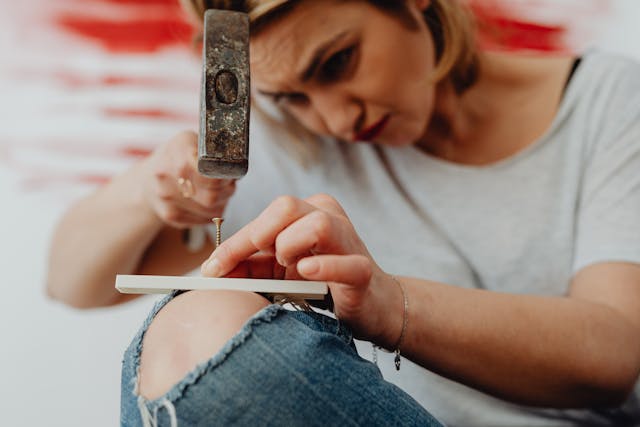Not everyone has a natural skill for fixing stuff or the ability to stay organised. So, what do you do when you need to get around to more repairs with fewer tools? Fear not, because here we have some little tips that will have you finishing your tasks like a TV builder on a budget!
Downsize the Toolbox
There isn’t really a need to buy every tool for every job. In fact, some tools can do many jobs. So, you don’t need to clutter the space you have with tools you will never use. Multifunctional tools such as an oscillating saw are a rare beast that is handy for precise wood, metal and plastic work. Another example is an electric screwdriver or drill. You can use multiple attachments, such as hex bits, for one tool rather than having an array of single-use tools.
OTS Supplies for More Repairs with Less Tools
Off-the-shelf supplies are a Godsend for most home DIY jobs. 54% of Brits enjoy a spot of DIY every now and then, and grabbing what you need from a DIY store just makes it easier:
- You can avoid having to buy bulky tools such as table saws with OTS lumber.
- Home improvement stores can cut materials to exact sizes if you ask them.
- Sandpaper and elbow grease reduce the need to use power tools such as sanders.
Invest in Multi-Use Tools
Multi-use tools are terrific when you have minimal space or a small toolbox. There is no need to bring your entire collection with you on a job. Today, there are many devices that you can attach various tools to. Of course, electric screwdrivers are mentioned above. But you can also get power tools from brands such as Worx and Ryobi that can cross attachments. Some also come with one battery, so you can use the same battery pack on individual and multiple tools.
Master DIY Basics for More Repairs with Less Tools
Like anything, you must learn to walk before you can run. Around 64% of us do DIY to save money, and the art of doing more repairs with fewer tools relies on mastering DIY basics. So, when decorating the living room on a budget, consider learning a few new little tricks.
When is a hammer not a hammer?
A hammer isn’t just for knocking nails into walls. Have you noticed the shape? Hammers can also be used as prying tools, and their sharp edges can even double as makeshift chisels.
The utilities of utility knives
A reliable utility knife has many uses for every DIY home project. A well-made knife is great for opening paint cans, stripping wires and even cutting drywall to exact dimensions in a pinch.
The right tools
You don’t need a room full of tools. Most tools can do multiple jobs, and knowing which to use and when is a skill. With practice and patience, you can make the most of what you have.
Learn to Measure Correctly
One of the greatest tools you have is common sense. Common sense dictates that you can’t fit something large into a small hole! Before you commit to anything when getting around to DIY, learn how to measure correctly. Measurements are vital for enjoying a job and completing it well. All you need is one tool, and that’s a sturdy tape measure. Stanley measuring tools are rugged and durable. With this one tool, you can ensure you avoid headaches during the process.
More Repairs with Less Tools through Preparation
It also helps to plan and prepare a DIY job before starting, even if it is a shelf! Mistakes cost more money, and a botched DIY job costs around £300 on average to remedy:
- Assess each job based on specific needs against the tools you have available.
- Layout your tools in the order you will need them and within easy reach.
- If you don’t have a tool you need, borrow one from a neighbour instead of buying one.
Maintain Items Rather than Replace
Who doesn’t love new stuff? Of course, new items, such as when decorating or renovating, cost more money. However, you can ensure you use fewer tools, save time and bank some cash by maintaining rather than replacing. For instance, a loose cabinet door doesn’t need to be replaced. It could be a case of tightening the screws. Every now and then, go around the home with your trusty electric screwdriver and see if anything needs fixing before it needs replacing.
Summary
Using multifunctional tools is an ideal way to complete more repairs with fewer tools, saving time and money. Of course, it helps to master DIY basics such as using a hammer correctly. You can also save space, time and money by maintaining the home instead of replacing your items.



